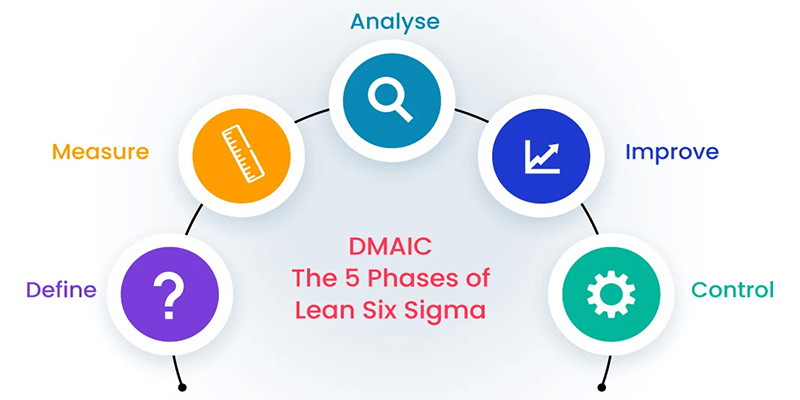Process Analysis is an important idea in business and organizational management. It comprises the systematic analysis and evaluation of processes within a business or organization in order to discover inefficiencies, improve operations, and, ultimately, improve performance. We will go into numerous areas of process analysis in this extensive weblog, from its definition to its various applications, methodology, and associated models. You will have a thorough understanding of the importance of process analysis in today’s dynamic business environment by the end of this tutorial.
Definition and Importance
Process analysis is the comprehensive assessment and investigation of processes, procedures, and activities inside an organization. It aims to learn how activities are completed, the sequence of events, and the resources used. This research provides significant insights into potential bottlenecks, inefficiencies, and places for improvement. Process analysis is a diagnostic technique used by businesses to optimize their processes and maximize efficiency.
Process analysis is critical for improving operational efficiency and accomplishing organizational goals. Businesses can cut costs, increase efficiency, and provide superior products or services to their customers by painstakingly evaluating and refining processes. It’s essential for attaining continual improvement and retaining a competitive edge in today’s fast-paced corporate world.
Process Analysis Stages
The process analysis journey is divided into numerous stages, each with its own objective and technique.
Depending on the nature of the process and the data available, process analysis can be conducted using quantitative or qualitative approaches.
✔Quantitative Methodology: This technique evaluates processes using numerical data and statistical analysis. Time studies, process mapping, and Six Sigma, which focuses on reducing process variability, are important quantitative techniques. Quantitative analysis gives actual data that can be used to identify and correct process faults.
✔Qualitative Methodology: Qualitative analysis is concerned with comprehending the “human” aspect of processes, such as team dynamics and communication. It frequently employs techniques such as interviews, questionnaires, and observations. When it comes to detecting cultural or behavioral constraints inside a company, qualitative investigation is invaluable.
Performance Evaluation
It is critical to evaluate the performance of the investigated process after completing process analysis. In this step, key performance indicators (KPIs) are established and compared to real process outcomes. This comparison allows businesses to discover areas where the process may be lacking and should be improved.
Performance evaluation is critical in the context of process analysis for various reasons. It provides a formal framework for determining if process improvements had the expected impact. Metrics like as process cycle time, mistake rates, and customer satisfaction levels may be included in KPIs. Organizations can assess the efficacy of their process improvements by studying these KPIs.

Additionally, performance evaluation allows firms to match their procedures with their strategic goals. If the process is not producing the desired outcomes, changes can be done to ensure that it contributes to the overall company goals. This alignment is essential for ensuring that every action and resource within the business serves a common goal.
Read more: What is Process Mining and How can it help you?
Finally, performance evaluation serves as a continual improvement feedback loop. Organizations can uncover new areas for improvement and make iterative changes to their processes by frequently analyzing process performance. This iterative strategy is important to process excellence, allowing firms to adjust to changing conditions while remaining competitive.
Flow Analysis
Flow analysis investigates the order of tasks within a process. Its purpose is to optimize activity sequencing, minimize delays, and ensure a smooth transition between process processes. Flowcharts and process maps are common visual aids used to provide a clear representation of the flow and to highlight potential bottlenecks and opportunities for improvement.
✔Flow analysis is critical in process optimization. It enables organizations to comprehend the sequence of events inside a process and detect potential delays or inefficiencies. Organizations can identify opportunities for improvement and streamline the process by visualizing the flow.
✔One of the primary advantages of flow analysis is that it improves process transparency. It is easier to communicate and collaborate on process changes when all stakeholders can observe the process flow. Transparency is especially vital when dealing with complex processes involving numerous teams or departments.
✔Furthermore, flow analysis is frequently used in conjunction with process automation. Organizations can employ automation technologies to further streamline operations once a process has been thoroughly studied and its flow has been streamlined. Automated procedures are not only speedier, but they are also less error-prone, resulting in increased efficiency and lower operational expenses.
To summarize, flow analysis is a critical component of process analysis because it allows firms to visualize and optimize the sequence of tasks within their processes. This improvement improves efficiency, reduces errors, and lays the groundwork for process automation.
Queue Analysis
Queue analysis focuses on reducing wait times within processes. Reduced client wait times, especially in service-oriented organizations, can considerably improve satisfaction and loyalty. To reduce queuing delays, measures like as load balancing and effective resource allocation are used at this step.

Queue analysis is an important component of process optimization, especially in businesses where customer service and timeliness are key. Organizations can improve customer happiness and loyalty by reducing wait times, resulting in higher business and a better reputation.
Load balancing is a typical strategy in queue analysis that guarantees workloads are spread fairly among resources. This protects certain individuals or departments from being overburdened, minimizing wait times and preventing service delays. Another method is efficient resource allocation, which ensures that the correct resources are accessible when needed, further decreasing queuing times.
Optimizing queue management can provide a substantial business edge in a world where customer demands are constantly rising. Organizations that perform in this area typically have higher client retention rates and increased referrals, resulting in long-term business success.
Benchmarking
Benchmarking is a comparative examination that compares an organization’s procedures to industry standards or rivals’ practices. This method assists organizations in gaining insight into the efficiency of their processes and identifying areas for improvement.
✔ In the area of process analysis, benchmarking is a key activity. It entails systematically comparing an organization’s operations to those of competitors or industry standards. Organizations can find areas where their processes thrive and areas where they may fall short by studying these comparisons.
✔ One of the most important advantages of benchmarking is that it provides an outside perspective. Organizations can become insular, concentrating solely on internal procedures. Benchmarking forces them to look outward and learn from the industry’s best practices. This outside perspective frequently reveals new ideas and potential for growth that were not obvious within the organization.
✔ Benchmarking can be divided into two types: competitive benchmarking, which focuses on direct competitors, and process benchmarking, which examines specific processes within other firms. This adaptability enables firms to modify their benchmarking efforts to meet their specific requirements.
✔ Finally, benchmarking is a powerful process analysis technique that enables firms to get useful information from external sources. Organizations may continuously improve their processes, increase efficiency, and remain competitive in their industry by learning from the successes and best practices of others.
Six Sigma Lean
The Lean Six Sigma methodology combines the waste-reduction principles of Lean with the data-driven approach of Six Sigma. It is a powerful instrument for achieving process excellence, with the goal of increasing both efficiency and quality.
When we get into the technicalities of Lean Six Sigma, we must remember that it is all about the pursuit of process perfection. It combines two effective approaches, Lean and Six Sigma, to form a structured strategy to dealing with process inefficiencies, variability, and customer satisfaction.

✔ Lean is concerned with reducing waste and simplifying operations. It detects and eliminates non-value-added operations, resulting in shorter process cycles and lower operational expenses. Six Sigma, on the other hand, is data-driven and focuses on eliminating variances and flaws in processes, resulting in higher quality and customer satisfaction.
✔ Lean Six Sigma employs a collection of tools and procedures for process improvement and process design, including DMAIC (Define, Measure, Analyze, Improve, Control) and DMADV (Define, Measure, Analyze, Design, Verify). Organizations can improve their operations, increase customer happiness, and increase profitability by implementing these approaches and technologies.
Lean Six Sigma is founded on several fundamental principles:
- Customer Focus: The primary objective is to meet and exceed customer expectations by delivering high-quality products and services.
- Data-Driven Decision Making: Decisions are based on factual data, ensuring that changes made to processes are supported by evidence.
- Continuous Improvement: The process of improving never ends. Organizations strive to continually enhance processes to achieve excellence.
- Team Collaboration: Lean Six Sigma encourages cross-functional teams to work together in process improvement efforts.
- Standardization: Standardizing processes reduces variation and improves overall quality and consistency.
- Waste Elimination: The identification and elimination of waste in all its forms are at the core of Lean Six Sigma.
✔ The DMAIC (Define, Measure, Analyze, Improve, Control) process is used in the Lean Six Sigma approach. It starts with describing the problem and finishes with the control phase, which guarantees that progress is maintained throughout time.
The DMAIC method is divided into five stages, which are as follows:
- Define: The problem or opportunity for improvement is clearly outlined during this phase. Goals and project scopes have been established, and stakeholders have been identified.
- Measure: During this phase, data is collected to determine the current state of the process. Key performance indicators are defined, and data is obtained to assess the scope of the problem.
- Analyze: Data is analyzed in this step to determine the root reasons of the problem. Various analytical tools are utilized to determine why the process is not performing as expected.
- Improve: Once the root causes have been identified, enhancements are devised and executed. This phase focuses on identifying solutions to the problems found in the analyze phase.
- Control: The control phase guarantees that the gains are maintained throughout time. This step comprises designing a control strategy to monitor and maintain the process’s performance.
✔ Lean Six Sigma is a highly structured and data-driven methodology that is effective for organizations seeking to enhance both efficiency and quality. It has been widely used to drive continuous improvement and customer satisfaction in a variety of industries, including manufacturing, healthcare, and services.
The APQC Model
The American Productivity and Quality Center (APQC) model provides a structured framework for evaluating process maturity and identifying opportunities for improvement. Because of its thorough approach to process analysis and emphasis on continuous improvement, this model is frequently used.
✔ The APQC model focuses on process performance and maturity, assisting organizations in comparing their processes to industry standards and best practices. The following are the major components of the APQC model:
- Process Identification: Identifying and categorizing processes within an organization.
- Performance Measurement: Establishing key performance indicators (KPIs) to measure process performance.
- Process Documentation: Creating comprehensive process documentation to ensure a clear understanding of processes.
- Process Analysis: Evaluating processes to identify areas for improvement and optimization.
- Process Improvement: Implementing improvements to enhance process performance.
- Process Management: Developing strategies for ongoing process management and monitoring.
✔The APQC model is useful for firms looking for a comprehensive approach to process analysis and improvement. It provides a formal framework for assessing and improving processes across multiple domains, resulting in increased efficiency and effectiveness.
Score Model
The SCORE (Supply Chain Operations Reference) model is designed for businesses looking to improve their supply chain procedures. It provides a formal framework for assessment and improvement, which is especially useful for firms that rely largely on effective supply chain management.

There are several primary areas of attention in the SCORE model:
- Performance Metrics: The model emphasizes defining and tracking key performance metrics relevant to supply chain operations. This ensures that organizations have a clear understanding of their supply chain performance and areas that require attention.
- Best Practices: SCORE promotes the identification and adoption of best practices in supply chain management. Organizations can leverage these best practices to enhance efficiency and reduce operational costs.
- Process Integration: The model encourages the integration of supply chain processes, ensuring that various functions work cohesively. This integration minimizes disruptions and bottlenecks in the supply chain.
- Continuous Improvement: Continuous improvement is a fundamental aspect of the SCORE model. Organizations are encouraged to regularly assess and enhance their supply chain operations, staying agile and responsive to changing market conditions.
Implementing the SCORE model can result in a more efficient and cost-effective supply chain, leading in higher customer satisfaction and a competitive advantage.
Applications and Advantages

Process analysis has numerous applications and benefits that can have a substantial impact on enterprises and organizations.
- Cost Reduction: By identifying inefficiencies and waste, process analysis can lead to substantial cost savings.
- Quality Improvement: Enhancing processes often results in higher-quality products or services, leading to increased customer satisfaction and loyalty.
- Operational Efficiency: Improved processes lead to streamlined operations, faster delivery of products or services, and better resource allocation.
- Risk Mitigation: Process analysis can help identify and mitigate potential risks, ensuring the sustainability of the business.
- Strategic Planning: Understanding processes thoroughly allows organizations to align them with strategic goals, ensuring that every action and resource within the organization is working towards a common purpose.
- Competitive Advantage: Continual process improvement gives organizations a competitive edge, as they adapt and evolve faster than competitors.
☐ Business Applications
- Supply Chain Management: Process analysis can optimize supply chain processes, reducing lead times and costs while increasing the accuracy of order fulfillment.
- Customer Service: Efficient customer service processes can lead to higher customer satisfaction, loyalty, and repeat business.
- Manufacturing: Streamlining manufacturing processes can result in higher productivity, fewer defects, and lower production costs.
- Quality Control: Ensuring product quality through effective process analysis enhances brand reputation and customer trust.
- Inventory Management: Optimizing inventory processes leads to cost reduction and better resource allocation.
- Financial Processes: Efficient financial processes can help businesses reduce operational costs and improve fiscal management.
- Human Resources: HR processes that are well-structured improve employee satisfaction and contribute to talent retention.
- Marketing and Sales: Analyzing marketing and sales processes can result in better lead conversion rates and customer relationship management.
☐ Advantages for Businesses:
- Cost Savings: Recognizing and removing inefficiencies lowers operational costs.
- Increased production: Simplified processes result in increased production and shorter delivery times.
- Improved Quality: Better processes result in better products or services.
- Customer Satisfaction: Better processes result in greater customer satisfaction and loyalty.
- Competitive Advantage: Organizations with efficient processes may respond to market developments more rapidly and outperform competitors.
Link to Process Mining
Process analysis and process mining are inextricably related. Event logs and data are used in process mining to uncover, monitor, and enhance processes. Process analysis insights can serve as the foundation for precise process mining initiatives, resulting in more effective process improvement.
✔ Process mining is a data-driven strategy that uses event logs and data to get insights into how processes work in practice. It can reveal process variances, bottlenecks, and inefficiencies that standard process analysis may miss.
✔ It is critical to understand the relationship between process analysis and process mining. The initial understanding of a process is provided by process analysis, which highlights its strengths and limitations. This understanding is then utilized as the foundation for process mining projects, in which data is collected and processed to gain a more detailed picture of the process’s performance.
✔ One of the most significant benefits of process mining is its objectivity. It is based on objective data rather than subjective assessments. This data-driven approach gives firms a clear, evidence-based picture of their processes, allowing them to make educated optimization decisions.
✔ Furthermore, process mining can be an effective method for tracking ongoing operations. Organizations can detect variations from intended process performance and take corrective steps quickly by continuously gathering and analyzing data in real-time.
✔ Finally, the relationship between process analysis and process mining is symbiotic. Process analysis provides the foundation for knowledge, and process mining expands on that understanding by examining data and event logs. This integrated strategy results in more efficient process optimization and ongoing improvement.
BehfaLab’s Features in Process Analysis
BehfaLab is the first artificial intelligence-based process mining system in the Middle East. By capturing the digital footprint of every process execution (data recorded in process-centric information systems such as CRM, ERP, BPMS, etc.), BehfaLab provides intelligent and automatic process monitoring and anomaly detection.
Read more: What is artificial intelligence, and what is its relationship with Process Mining?
Organizational analysts can leverage BehfaLab’s capabilities in various modules to analyze their data-driven process performance. Below, we describe these modules in detail:
Quick Overview of Process Performance with BehfaLab Dashboard

Dashboard Module of BehfaLab
BehfaLab’s dashboard offers analysts a comprehensive and quick view of process performance. With this dashboard, you can analyze the time performance of cases, identify bottlenecks, key activities, and frequently used process paths. In other words, with the BehfaLab dashboard module, you can have a complete and transparent picture of your organization’s process performance.
Real Process Workflow Analysis with BehfaLab Map Module
BehfaLab’s process map module, independent of employees’ understanding and based solely on real data, automatically discovers the real workflow of the process. This module allows analysts to understand the real process workflow, identify and analyze paths and bottlenecks, and ultimately explore deviant process paths.
Detailed Process Performance Mining and Comparison with BehfaLab Analysis Module

Performance Mining Module of BehfaLab
With the BehfaLab analysis module, you can analyze process performance from various perspectives. This module enables the comparison of cases, variants, and activities based on key performance indicators. With this module, you can compare process performance based on various attributes such as branch, customer type, and more for in-depth root cause analysis.
Analyzing the Communication Network of Individuals with BehfaLab Organization Mining Module
BehfaLab’s organization mining module, combining process mining and social network analysis, shows the communication network between individuals in each process to analysts. With this module, you can identify and analyze the performance of key individuals who influence process execution.
Analysis, Interpretation, and Automated Process Improvement with BehfaLab’s Artificial Intelligence
BehfaLab’s artificial intelligence acts as a digital assistant that not only understands the process but also automatically interprets process performance, identifies inefficiencies, and provides suggestions for improvement.
To summarize, process analysis is a diverse methodology with applications and advantages spanning sectors and organizations of all sizes. It is a necessary component of establishing operational excellence and being competitive in today’s fast-paced business and organizational context. Process analysis, whether in the business world, the public sector, or educational institutions, provides a road to increased efficiency, quality, and continual development.



